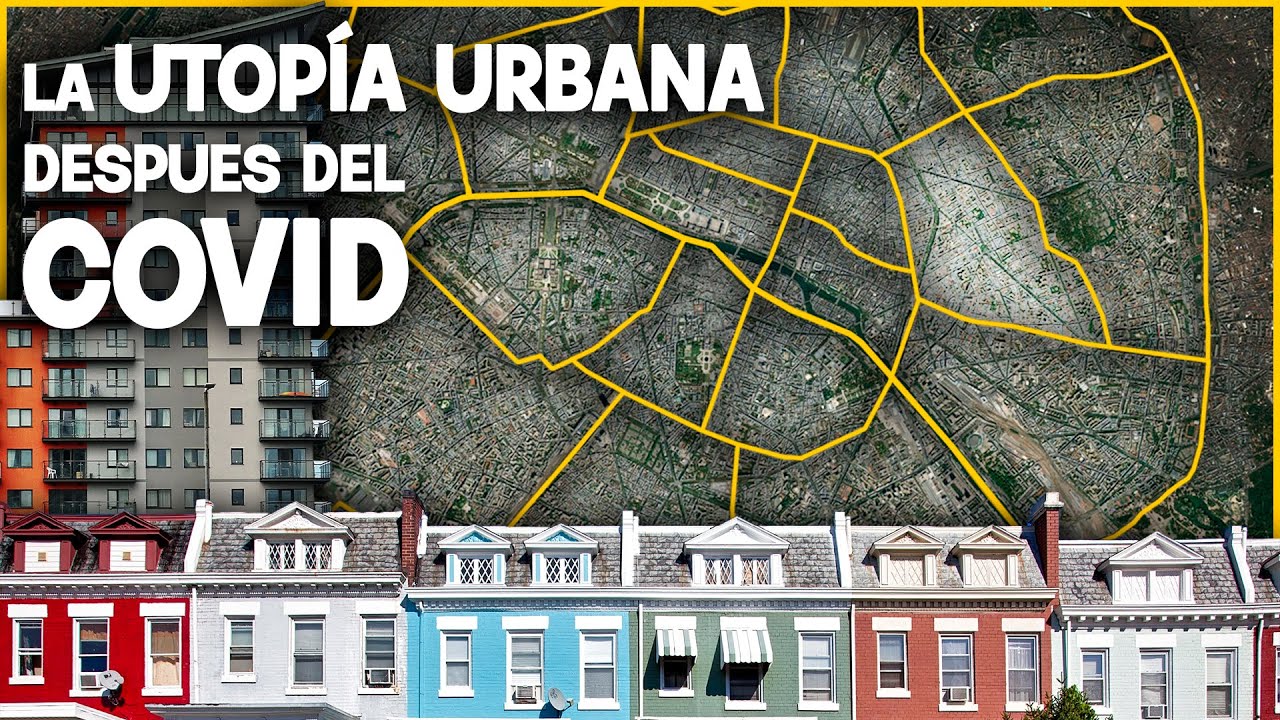NYC and the 15-minute city concept
Summary
TLDRThe concept of the 15-minute City envisions a neighborhood where essential services are within walking or biking distance, reducing reliance on cars and promoting sustainability. This model fosters community, boosts local businesses, and ensures equitable access to resources. The video contrasts traditional urban planning, which relies heavily on cars and urban sprawl, with the 15-minute City, using real-life examples like Greenpoint, NYC. The video emphasizes that implementing this concept requires collaboration between urban planners, local governments, and the community. It calls for more awareness and involvement in local urban planning to build more accessible and sustainable cities.
Takeaways
- 😀 The 15-minute city concept prioritizes walkable or bikeable neighborhoods where basic needs can be met within a 15-minute radius.
- 😀 This urban model contrasts with car-dependent city layouts that often require driving for even basic errands like grocery shopping.
- 😀 A 15-minute city aims to reduce urban sprawl by incorporating mixed-use buildings that combine residential, commercial, and recreational spaces.
- 😀 In a 15-minute city, accessibility to key services such as grocery stores, laundromats, pharmacies, and specialty shops is central to its design.
- 😀 Public transportation options, like buses and subways, complement walkable areas in the 15-minute city, making it easier to move around without a car.
- 😀 The goal is not just about proximity to services but also ensuring that these services are affordable and accessible to everyone, promoting community and equality.
- 😀 Safety, green spaces, sidewalks, and bike lanes are essential components of the 15-minute city, replacing parking lots and car-centric infrastructure.
- 😀 Mixed-use zoning allows for a combination of businesses and residences, fostering vibrant and sustainable neighborhoods with less reliance on cars.
- 😀 The 15-minute city encourages local businesses, promotes public health, and reduces environmental impact by cutting down on car usage and traffic.
- 😀 Adopting the 15-minute city model requires collaboration from urban planners, government officials, businesses, and communities to address issues of accessibility, safety, and inclusivity.
Q & A
What is the core concept of a 15-minute city?
-The core concept of a 15-minute city is that people should be able to meet their basic needs, and often beyond, within a 15-minute walk or bike ride from their home.
What are some alternative names for a 15-minute city?
-A 15-minute city is also referred to as a 20-minute city, 10-minute city, 15-minute village, complete neighborhood, or walkable neighborhood.
How does a typical city layout in the United States differ from a 15-minute city?
-A typical U.S. city layout is usually divided into distinct zones for commercial areas, residential communities, and parks, which often necessitates car ownership and leads to urban sprawl. In contrast, a 15-minute city aims for a decentralized, mixed-use layout that reduces the need for cars.
What issues are caused by the car-dependent city planning in the U.S.?
-Car-dependent planning leads to urban sprawl, lack of sidewalks or bike lanes, and the need for excessive parking spaces, making it difficult to walk or bike between destinations.
What benefits did the speaker experience while living in a 15-minute city neighborhood in Greenpoint?
-In Greenpoint, the speaker enjoyed easy access to essential services like groceries, pharmacies, laundromats, and specialty stores within a 5-10 minute walk, along with ample green spaces, public transit, and a variety of community amenities.
How does the 15-minute city model promote sustainable transportation?
-The 15-minute city model reduces the reliance on cars, encouraging walking, biking, and the use of public transportation, which leads to less traffic, lower carbon emissions, and more sustainable urban living.
How does mixed-use zoning contribute to the 15-minute city concept?
-Mixed-use zoning allows for a combination of residential, commercial, and public spaces within the same neighborhood, making it possible for people to live, work, and access services within walking distance.
What role does community involvement play in creating a 15-minute city?
-Community involvement is crucial for the success of a 15-minute city, as local residents, urban planners, policymakers, and business owners must collaborate to address issues like safety, affordability, and accessibility in order to build inclusive and sustainable neighborhoods.
What are the environmental and social benefits of a 15-minute city?
-A 15-minute city is environmentally friendly because it reduces car dependency, leading to less pollution and reduced carbon emissions. Socially, it promotes community interaction, health, equality, and improved access to essential services for all residents.
What challenges might arise in implementing a 15-minute city model?
-Challenges include ensuring affordability of goods and services, maintaining safety in neighborhoods, overcoming resistance to change, and coordinating the efforts of planners, government, and businesses to create a balanced and inclusive environment.
Outlines

This section is available to paid users only. Please upgrade to access this part.
Upgrade NowMindmap

This section is available to paid users only. Please upgrade to access this part.
Upgrade NowKeywords

This section is available to paid users only. Please upgrade to access this part.
Upgrade NowHighlights

This section is available to paid users only. Please upgrade to access this part.
Upgrade NowTranscripts

This section is available to paid users only. Please upgrade to access this part.
Upgrade NowBrowse More Related Video

Is 15-Minute City the Future of Urban Living?

the anti-15-minute-city backlash is ridiculous

¿Son Las CIUDADES DE 15 MINUTOS De Verdad Una Buena Idea? || Urbanópolis

[EXPLAINER] Will Manila become a 15-minute city?

WHERE TO STAY in Athens [Watch BEFORE you book a hotel]

What a Typical Tokyo Neighbourhood is Like
5.0 / 5 (0 votes)